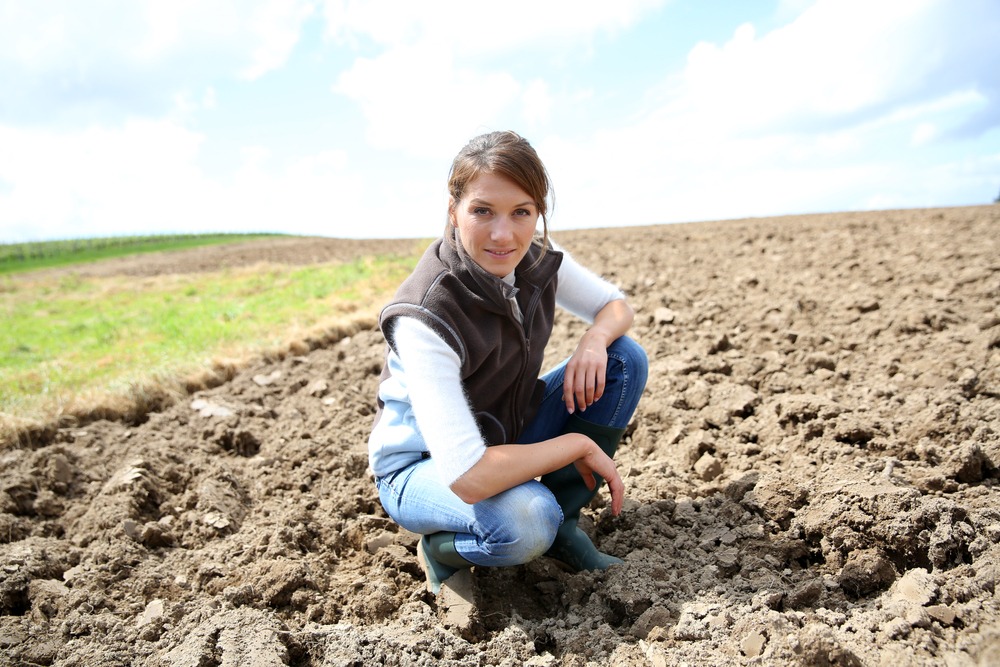Nearly 301 million acres of US farmland, or one-third of American farms, are managed or co-managed by women, according to a new report from the American Farmland Trust’s Women for the Land Initiative. Women landowners hold title to at least 87 million additional acres, meaning they own the property but may retain other persons to manage it or lease it to non-owner farmers.
American Farmland Trust’s is taking the opportunity to shed light on women in agriculture during women’s history through its new report Testing the Women Landowner Conservation Learning Circle Model.
The Women for the Land initiative combines research, grassroots projects, and policy efforts to preserve farmland and advocate for conservation. The initiative has three main platforms: research into barriers that women landowners face, cultivating learning circles to connect women farmers and landowners and providing technical assistance and policy reform advocacy to better support women landowners.
Over the next two decades, nearly 400 million acres of farmland will likely change hands as farmers retire or pass away, according to AFT. Women could play a vital role in carrying on the family business or purchasing farmland that becomes available for sale. Women farmers could also increase in numbers.
According to AFT, gender barriers are still rife throughout agriculture, primarily when it comes to underrepresentation in conservation programs. Women landowners and farmers also reported feeling like they lacked sufficient knowledge about farming practices, lacking the same experience and opportunities that some of their brothers were afforded growing up on a farm or in rural communities. Others felt intimidated by the ‘old boys club’ mentality that still permeates many segments of the food supply chain, where women often aren’t taken seriously.
But AFT also recently discovered that one of the best ways that women landowners can overcome barriers and increase their conservation impact is through networking. Between 2014 and 2017, AFT, Women and Food Agriculture Network, and the National Resource Conservation Service teamed up to conduct 43 learning circles across Illinois (13 circles) and Indiana (31 circles) in partnership with local conservation agencies.
The following year, Utah State University conducted in-depth phone interviews with 130 attendees to gauge the impact. The average age of the attendees was 62 and 70% of them lived on their farms, while only 36% were the sole owner of the land. About one-third of the attendees were actively engaged in farming.
“The goal of the learning circles is to engage women in conversations about conservation on their land, connecting them with each other and with local resource professionals who can help them manage their land productively and to benefit the environment. We knew from the experience of WFAN in Iowa that these learning circles work. Early survey results indicate that 50 to 70 percent of women who attend ‘take a conservation action’ within six to 12 months of attending just one circle,” reads the report.
The Learning Circles are expanding during 2019, with AFT hosting gatherings in Midwest, Ohio, California, New York, New England, and the Mid-Atlantic. Upcoming learning circles are always posted to our calendar.
Women in AgTech
Women are making strides in agriculture technology — and they’re even shaping innovation in food and agriculture — but they face some of the same challenges that women landowners and farmers are battling. Last year, Agrilyst CEO Allison Kopf spearheaded the compilation of a publicly available and editable list of women leaders in agriculture to challenge event and conference organizers to increase gender representation in public discussions of the industry.
By and large, female founders and startup employees are making vital contributions to agtech through multiple segments including food waste, precision ag, animal health, and biotech. There’s even a Women in AgriFood Tech Slack group, which you can join here, where women in the industry can network.
In January 2019, AgFunder teamed up with The New Food Economy and consultancy founder Karen Karp to figure out how women in agrifood tech investment were faring. The results of the Money Where Our Mouths Are project were illuminating.
After identifying 2,788 deals during a five year period that provided gender information, the number of deals with women founders, CEOs, and/or presidents were identified. Only 499 of the companies identified had at least one female CEO, founder, or president.
During 2017 only $19.8 billion was invested in those women-led agrifood tech startups out of $85 billion total dollars deployed. During the first 10 months of 2018, that figure climbed to roughly 17% of the whopping $255 billion in total investment across all sectors.
The analysis revealed, however, that early-stage companies are more likely to have a female leader than late-stage companies, with 20% of seed stage deals involving a women-led company compared to 9% of later-stage deals.
Across all agrifood tech sectors, however, it is more likely that the companies lack a women leader. The segments where women seem to be spearheading the most innovation are online restaurants and meal kits, in-store retail and restaurant tech, and home cooking. The sectors with the least amount of women-led entrepreneurship are farm management software/IoT, robotics and mechanization, and supply chain technologies.
The Money Where Our Mouths Are project is ongoing. Stay tuned to The New Food Economy and AgFunderNews to follow the study’s findings.
How Far Have Women in Agriculture Come?
The USDA Census of Agriculture did not start asking questions about female farm operators until 1978. Since then, the number of women-operated farms in the US nearly tripled, from 5% in 1978 to 14% in 2007. Most women-operated farms are small, however, with annual sales of less than $10,000 and 82% of farms comprising less than 180 acres.
In 2012, there were less than one million women farmers in the US according to the 2012 Census of Agriculture, marking a 2% decline since the 2007 Census of Agriculture. Women made up 30% of farmers, with Texas leading the nation in the number of women farmers and Arizona having the highest proportion of women farmers at 45% of all farmers in the state.
When it comes to principal operators, however, which are the farmers who are in charge of an operation, the number of women decreased 6% between 2007 and 2012. The data also revealed that women principal operators tend to be older than male principal operators at an average age of 60.1, with only 4% of women principal operators being under the age of 35.
Women farmers are engaged in a variety of crops, including combination farming and hay production. Beef cattle farming and ranching were the next highest category, followed by combination livestock operations.





